Implementation • RWSN Helping You
Description: Terry Waller of Water for All in Bolivia developed Baptist drilling in 1993. It is a hybrid between sludging and percussion drilling. The main difference is that while hand sludging relies on a person’s hand at the top of the drill pipe as a valve, the Baptist method uses a valve, incorporated into the bit at the bottom of the drill stem.
Description: A driven well refers to driving a well point and well screen directly into the ground using a hammering tool (figs right). The material is forced aside rather than excavated by this technique. This technique is sometimes used in conjunction with hand augering.
Description: EMAS Drilling, developed by Wolfgang Buchner in Bolivia combines jetting with a percussion action. Drilling mud (water mixed with clay or bentonite to a suitable density) is pumped down through the drill stem using a hand operated metallic version of the EMAS pump. The mud flows back up around the drill stem, carrying up the drill cuttings. Sand and small stones are decanted, and the drilling mud is recycled through the pump. When progress is difficult, due to particularly course sand or small pebbles, the technique is changed to a suction system.
Description: Hand augering can be undertaken with a heavy tripod and winch (such as provided by the Vonder Rig). Alternatively, very light equipment can also be utilised such as that common in Niger. Common to both of these rigs is the auger bit. A bailer can also be used to remove the spoil form the hole in the form of a slurry. Drilling is undertaken by rotating the auger into the ground, and adding additional drill pipe as the hole deepens.
| Manual drilling refers to several drilling methods that rely on human energy to construct a borehole and complete a water supply. The various techniques can be used in areas where formations are quite soft and groundwater is relatively shallow.Manual drilling can provide safe drinking water. The equipment can easily be transported to remote, or difficult to serve populations which would otherwise be left behind. The lower costs compared to machine drilling are appreciated by households, businesses and governments. Manual drilling also provides local employment. | 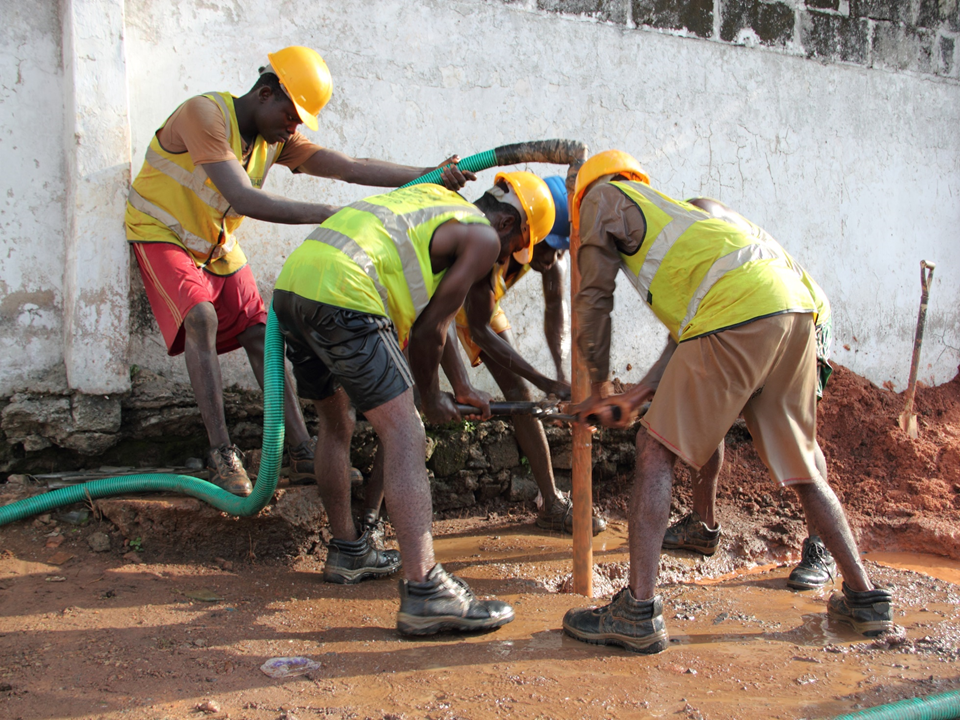 |
Manual drilling methods are being used to provide water for drinking and other domestic needs at least 36 countries around the world. In some places, manual drilling methods are well established.
Manual Drilling is part of the RWSN Professional Water Well Drilling topic.
This website catalogues key reports, videos and links on technical and broader aspects of manual drilling. You can also click here for all manual drilling publications available on the RWSN website (English Filter & French Filter).
Worldwide Overview
|
|
Specific Country Experiences
|
Manual Drilling - A global perspective of local realities. UNICEF/RWSN Webinar Series 2014. Five webinars (recordings, presentations and learning notes) examine the successes and challenges experienced by different organisations involved in manual drilling in:
|
|
Bolivia |
|
Chad
|
|
Democratic Republic of Congo |
|
India |
|
Madagascar
|
| Malawi |
|
Niger |
Nigeria
|
|
Panama |
|
South Sudan |
|
Uganda |
|
Zambia |
|
Zimbabwe |
Maps and Reports of Manual Drilling Potential
|
Using existing borehole data, analysis and GIS technology, studies and maps of the potential for manual drilling are available for the following countries: |
|
UNICEF Toolkit for the Profesionalization of Manual Drilling
The toolkit supports African countries wishing to embark on the profesionalization of manual drilling. It includes technical notes and manualy, advocacy materials, mapping of suitable areas for manual drilling, case studies, and implementation and training manuals. This toolkit sets out how to builds the capacity of the local private sector in order to respond to the ever increasing demand for safe water in rural areas.
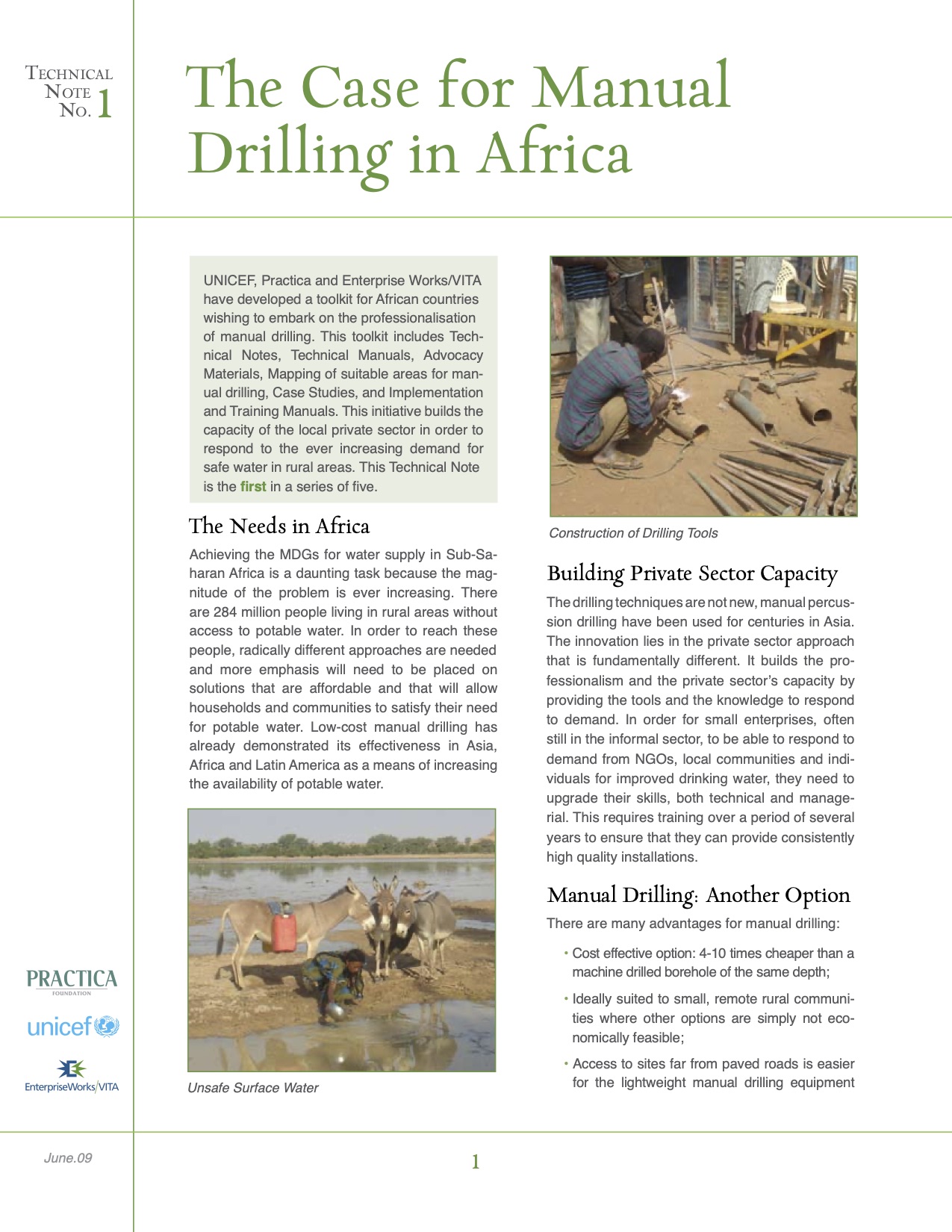 |
Technical Note Series on manual drilling (2009) in English and French 1. The Case for Manual Drilling in Africa |
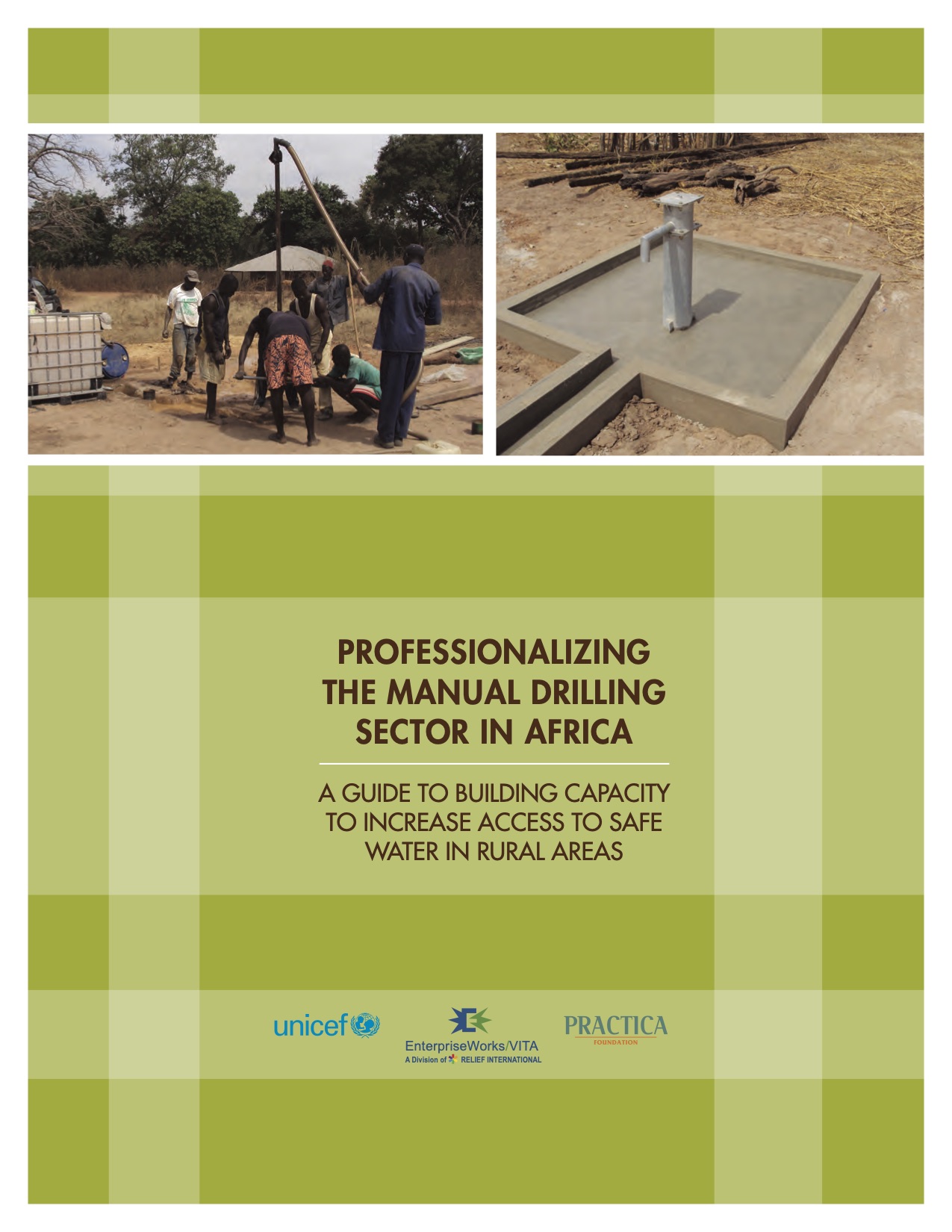 |
Technical manuals for manual drilling (2010) in English and French 1. Professionalizing the Manual Drilling Sector in Africa |
|
Videos for the promotion of manual drilling in English and French |
Training
A very short introduction to manual drilling
Hand drilling is also known as manual drilling, human powered drilling, and is sometimes referred to simply as low cost drilling. As the names suggest, hand drilling technologies primarily utilise human energy.
The cost of a manually drilled well can 10% to 50% of machine drilled or hand dug well to similar depth. Hand drilling equipment can often be readily taken to sites which larger, more conventional drilling cannot access. However, it is important to note that hand drilling techniques are extremely effective in appropriate ground conditions. They are not suitable beyond their hydrogeological limitations. In cases where the formation is too hard, or the water bearing formation too deep, conventional drilling is the preferred option.
Description: Percussion (also known as cable tool) drilling refers to the alternate breaking of the formation and cleaning the hole. Percussion drilling is often undertaken with different tools – eg a chisel to break followed by a bailer to remove the spoil. There are also clay-cutting tools available that can both cut and remove the spoil. The drilling tools and weights (referred to as the tool string) is suspended from a rope or steel cable and reciprocated through a stroke of 1 to 3m. Small amounts of water are usually added to the hole to help loosen the formation. It is often necessary to line the hole with temporary steel casing to prevent collapse.
Description: The Pounder Rig has been derived from sludging, but has been designed to deal with the weathered overburden, also known as regolith, which lies on top of basement formation. These conditions are common in much of Africa.
Description: The rota sludge technique is similar to hand sludging and the Pounder rig. It involves raising and lowering a steel pipe, which is weighted at the bottom and fixed with a drill bit on the base to drill the hole. A simple wooden frame and lever are used to enable the reciprocating action. Water mixed with cow dung is used as drilling mud – ie to carry the cuttings to the surface and prevent collapse of the drilled hole. A hand, placed at the top of the pipe acts as a valve, lifting up and releasing the cuttings on the down stroke and covering the pipe on the up stroke. A pit (Figure - above centre) enables the drill cuttings to settle out and thus the mud to be recycled. A handle is clamped to the drill pipe. This allows rotation of the drill pipe, which assists to scrape and break the formation.
The stone-hammer technique is used in conjunction with the rota sludge technique to penetrate hard formation.
Description: Hand sludging (also known as Asian, or Indian sludging) is a traditional technique used in parts of Nepal, India and Bangladesh. It involves reciprocating a steel pipe (of 25 to 40mm diameter) vertically in a shallow pit, which is kept full of water. The reciprocating action is achieved by a lever, which is attached to a bamboo frame. One operator operates the lever while the other uses his hand over the top like a flap valve. On the up-stroke the hand covers the pipe, while on the down stroke it lifts off. This action enables the cuttings to be carried up through the drill pipe and exit at the top.
Description: This technique is a variation of hand percussion drilling. A 60cm long cutting tool is fitted to the base of a drill pipe. A 70kg steel weight (or hammer) is lowered into the drill pipe. This hammer is raised and dropped onto the cutting tool, forcing it to penetrate the formation, before being lifted out carrying the cuttings.
Well jetting is also known as washboring, and in Nigeria as hand turning.
Description: Jetting is considered to be a manual drilling technology, even though it utilises a small pump. The technique involves pumping water (with a hand, or motorised pump), down the drill pipe, which is held vertically in the hole. The water passes through the bottom, open end of the pipe and carries the drilling spoil up the annulus. The drill pipe is held vertically and slightly rotated and/or reciprocated. It is the washing action of the water, which forms the hole. The drill pipe is usually up to 50mm in diameter, while the hole is 100 to 150mm. The equipment comprises a centrifugal pump, suction hose, flexible delivery hose, elbow and swivel and jetting pipes. Temporary casing can be used, but a technique which enables the self jetting of wellscreens has also been developed. In cases where the ground is very compact, a special jetting point is used.
 Google Übersetzer
Google Übersetzer

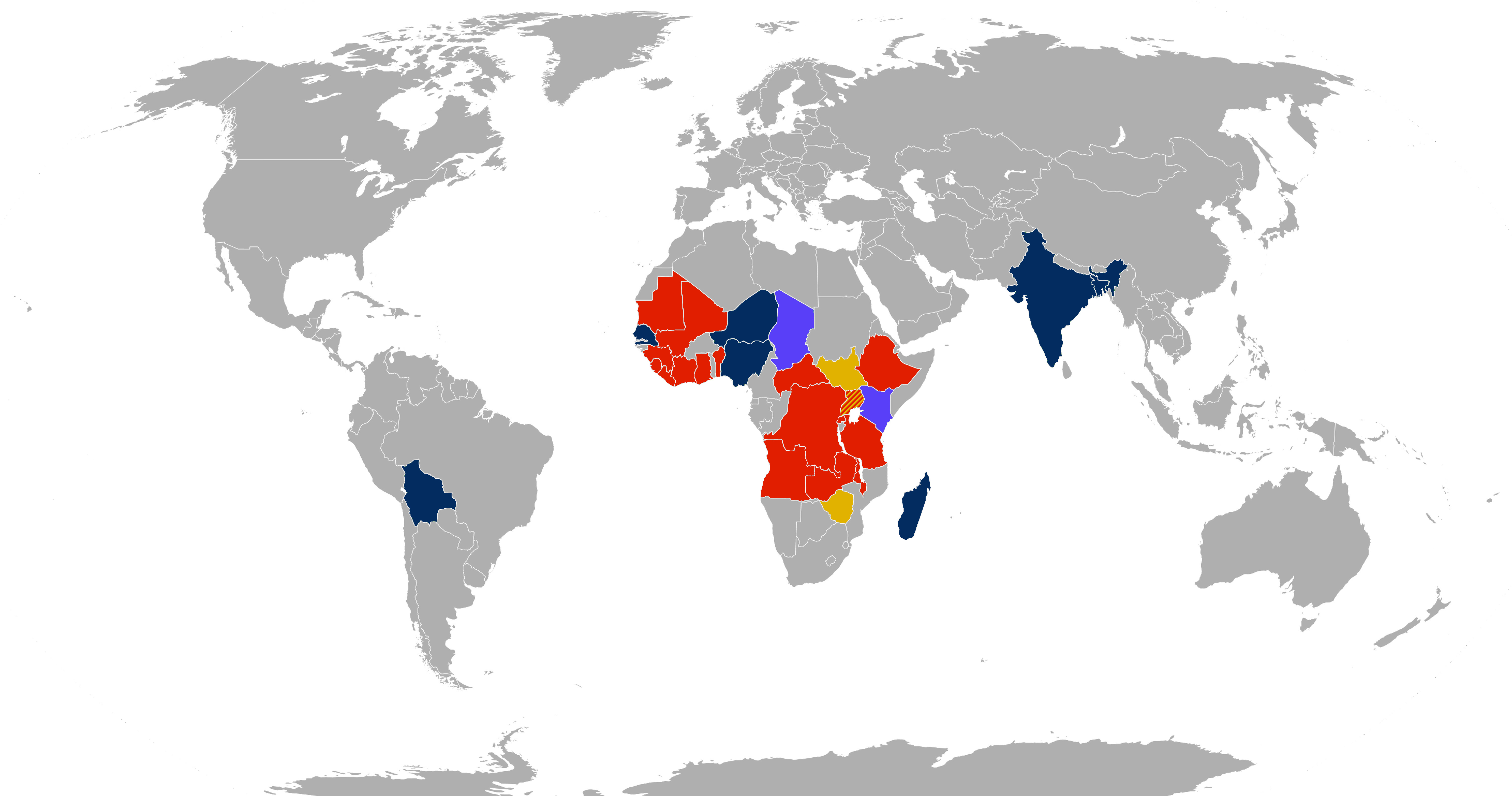
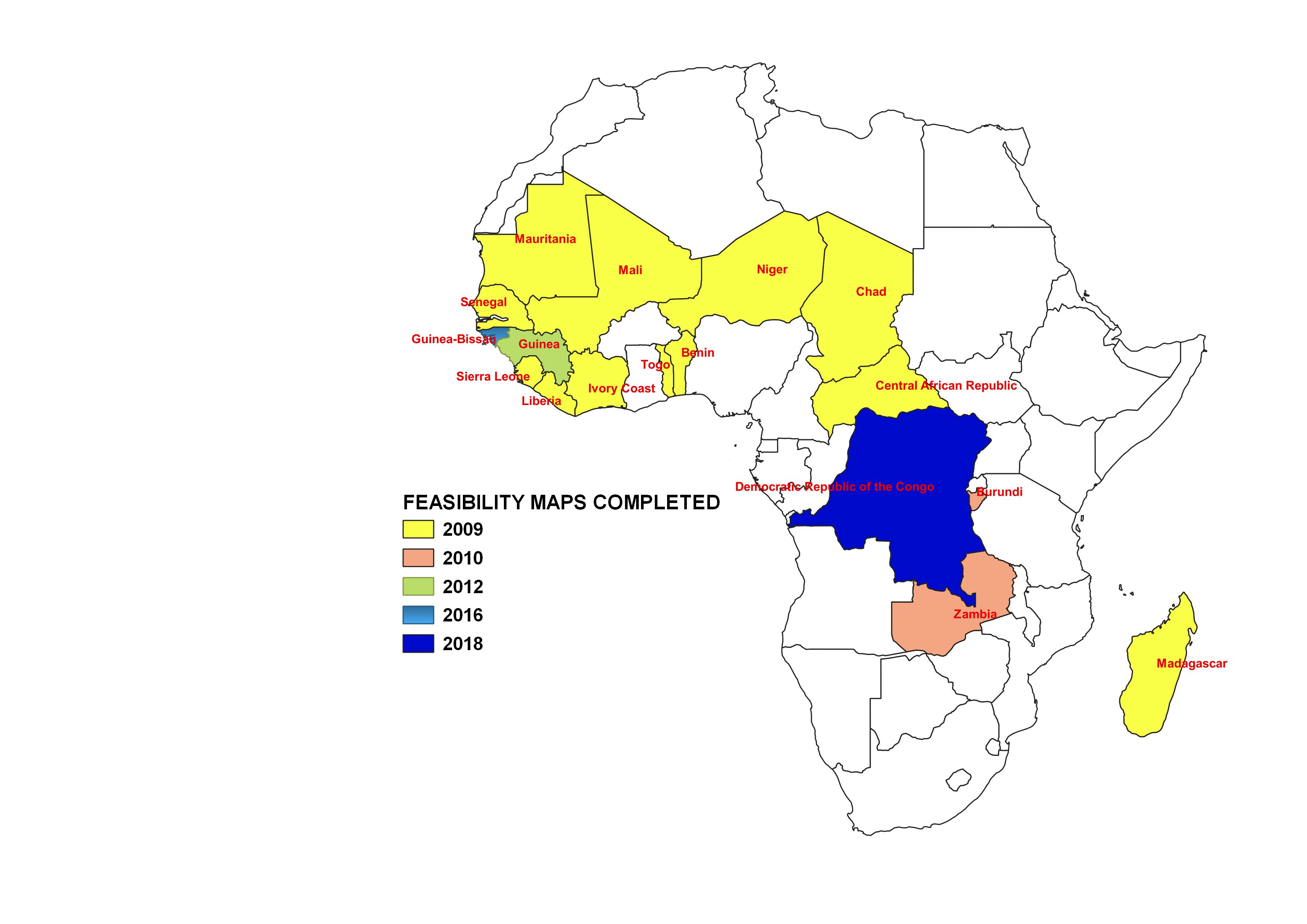 Figure (above): Overview of countries where manual drilling potential has been mapped and when undertaken
Figure (above): Overview of countries where manual drilling potential has been mapped and when undertaken